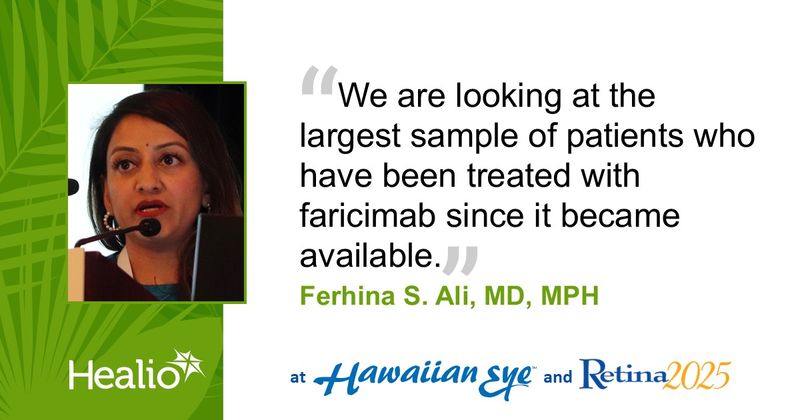Real-world data show visual acuity benefit of faricimab in neovascular AMD
Key takeaways:
- Visual acuity improved in treatment-naive patients and was stable in previously treated patients.
- Patients also experienced a reduction in central subfield thickness.
KOLOA, Hawaii — Faricimab helped improve vision in previously untreated patients with neovascular age-related macular degeneration, according to a real-world study presented at Retina 2025.
Ferhina S. Ali, MD, MPH, presented an update on clinical outcomes from FARETINA-AMD, a retrospective real-world study that used data from the IRIS Registry.

The study included patients with a diagnosis of neovascular AMD who received at least one faricimab injection between February 2022 and March 2023. All patients had at least 12 months of medical data before starting faricimab and at least 12 months of follow-up data, and visual acuity measurements were required, Ali said.
The study included data from 2,025 previously untreated patients and 22,253 patients who had previously undergone treatment.
Among patients in the treatment-naive group, mean visual acuity at the seventh faricimab injection was 62 letters compared with 57.3 letters at baseline. In the previously treated group, patients maintained visual acuity of 62 letters after the seventh injection vs. 61.7 letters at baseline, Ali said.
In a subgroup analysis, patients in both groups experienced reduction in mean central subfield thickness after the seventh faricimab injection compared with baseline (253.7 µm vs. 307.6 µm and 270.7 µm vs. 293.1 µm, respectively).
“We are looking at the largest sample of patients who have been treated with faricimab since it became available,” Ali said. “Patients presented on average with good vision. We saw vision that improved in the treatment-naive eyes and stability of vision in previously treated.”

